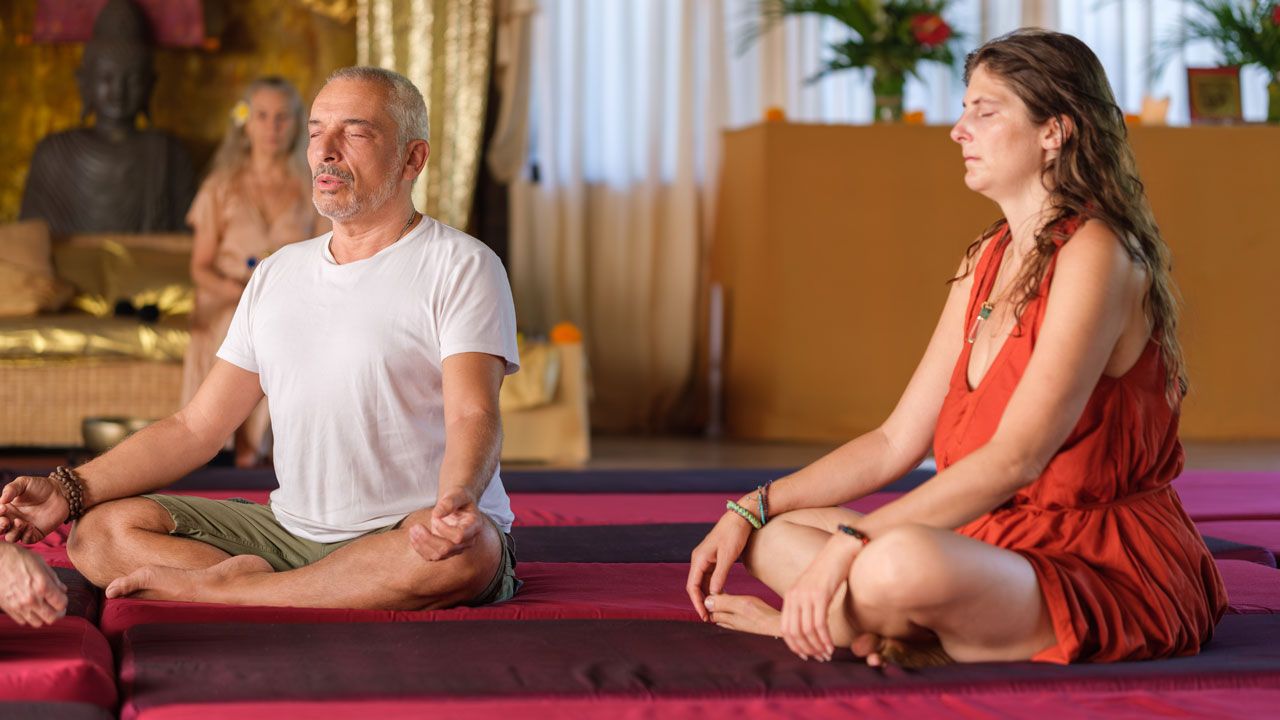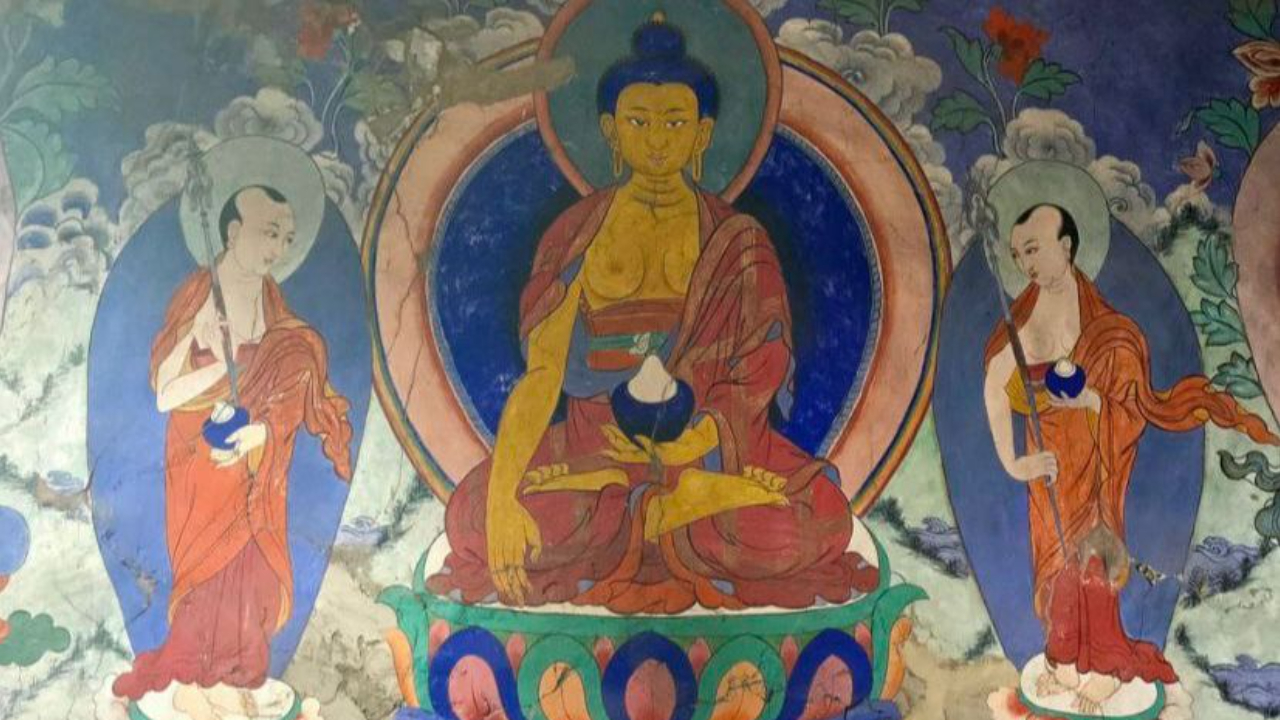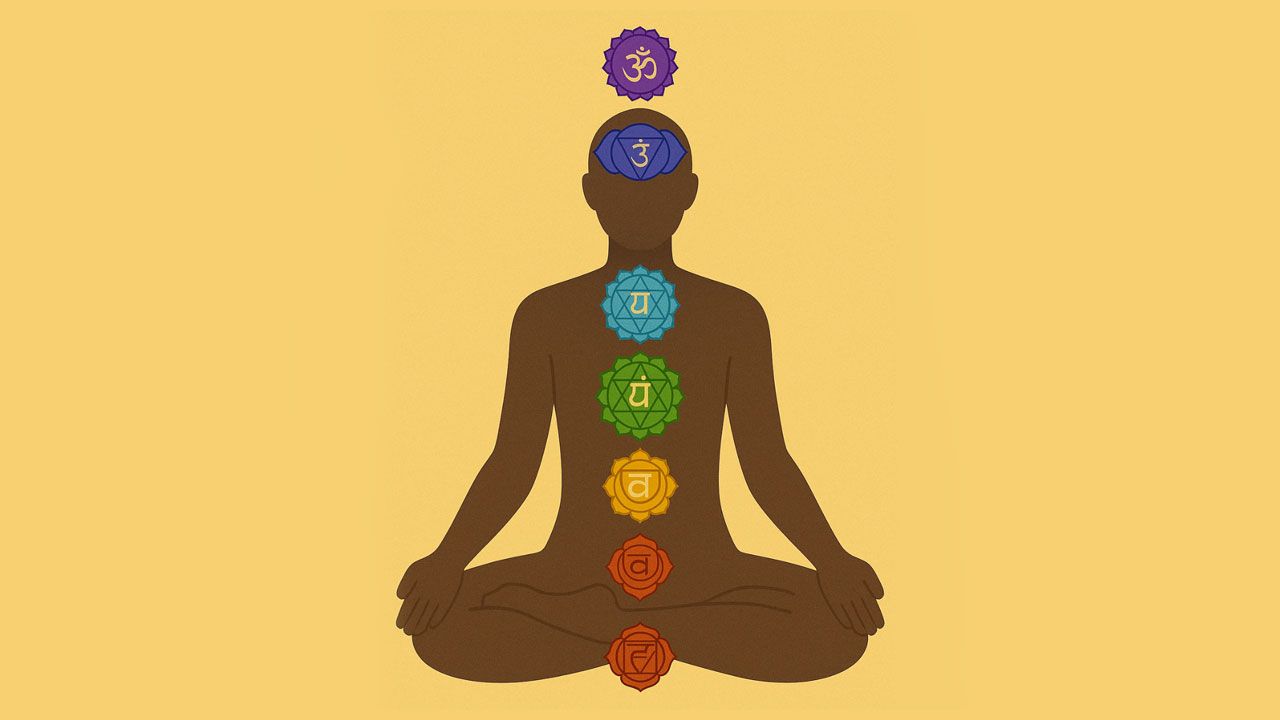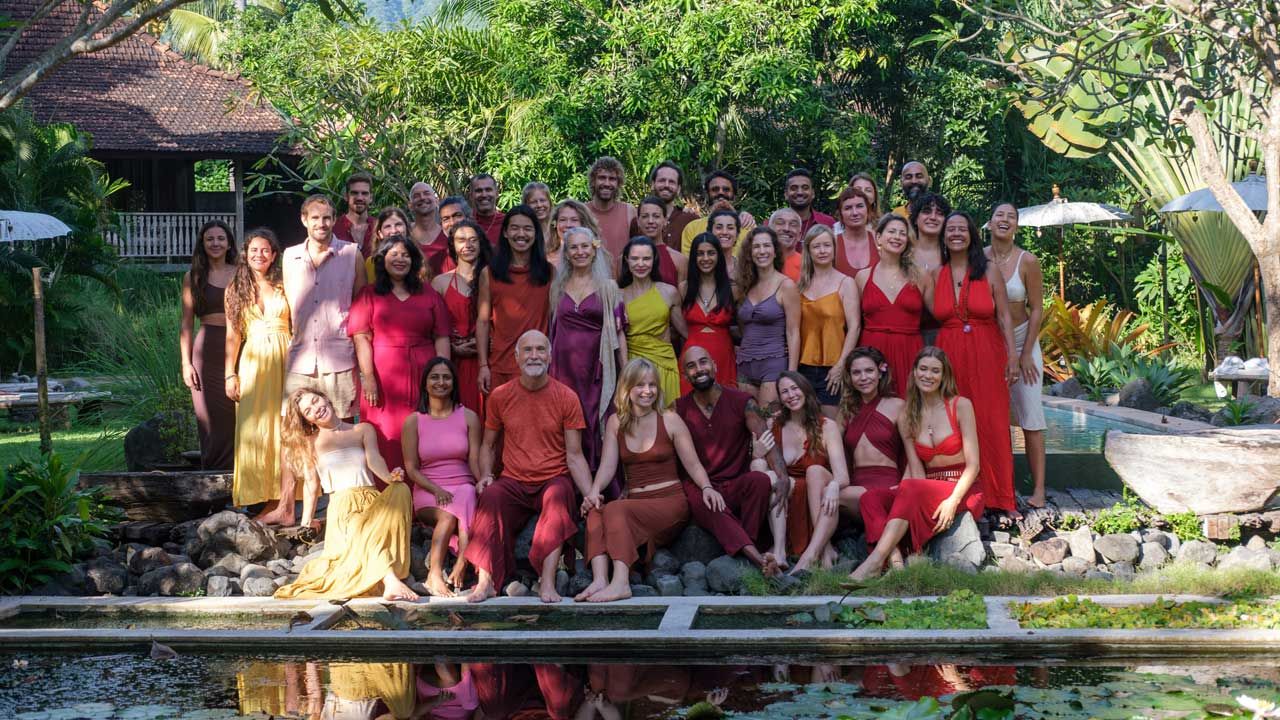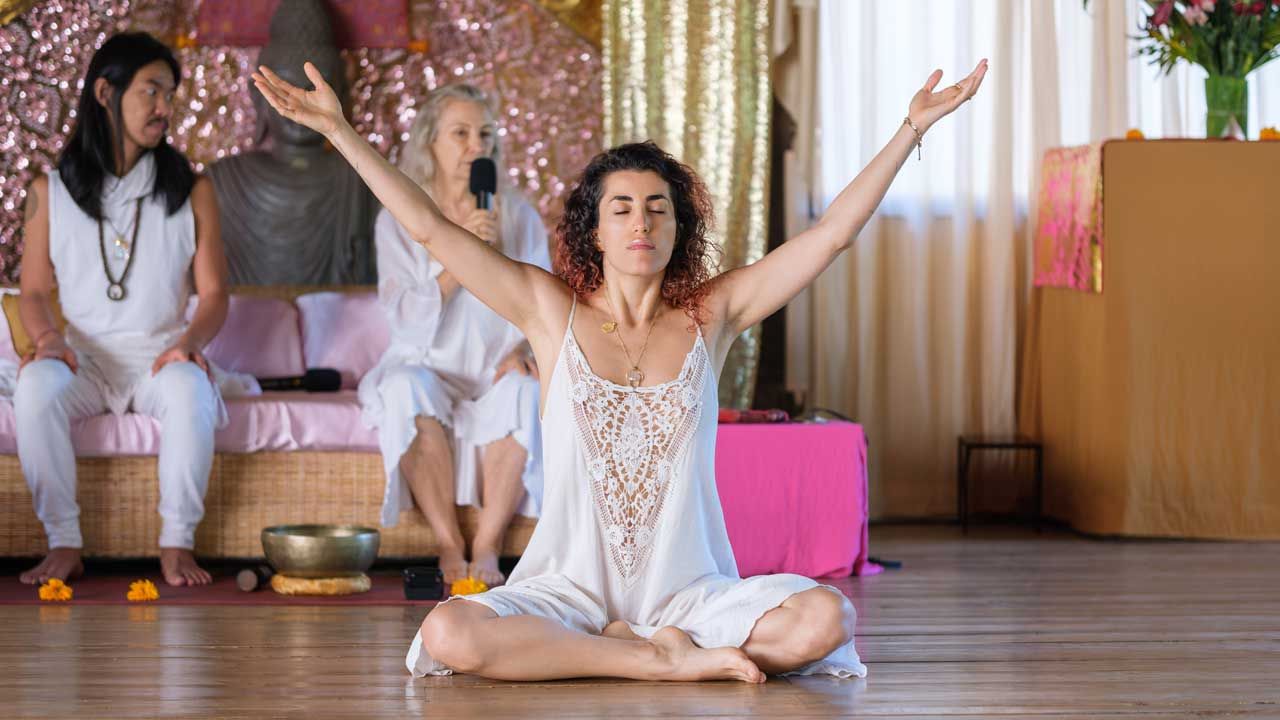What Is the Most Important Tantric Teaching?
Aug 06, 2024
Forget what you think you know about the word Tantra. We’re not here to discuss bedroom techniques or mystical mumbo-jumbo. Instead, we’re diving into the heart of Tantric wisdom - practical, powerful teachings that have been reshaping minds and opening hearts for thousands of years.
These six essential Tantric teachings are tools for living, keys to unlocking a deeper understanding of yourself and the world around you. So open your mind, leave your preconceptions at the door, and prepare to explore a path that might just change everything.
Teaching 1: The Unity of All Existence

Tantra whispers that separation is an illusion. You, me, that annoying neighbor who never returns your hedge trimmer, we’re all part of one grand, big picture. It’s like we’re waves in an infinite ocean, distinct for a moment but ultimately inseparable from the whole.
But hold on, you might be thinking, “I stubbed my toe this morning, and it definitely felt separate from the coffee table!” Fair point. Tantra doesn’t deny our individual experiences or the apparent diversity of the world. Instead, it invites us to peek behind the curtain of everyday perception and glimpse the underlying unity.
Embracing this teaching can profoundly shift how you move through the world. Imagine treating every person you meet as another version of yourself. Suddenly, that rude barista becomes a mirror, reflecting parts of yourself you might rather ignore. That stranger who holds the door becomes a reminder of your own capacity for kindness.
Connecting with this teaching also doesn’t mean losing your individuality. Instead, it’s about expanding your sense of self beyond the confines of your skin. It’s about recognizing that your actions ripple out into the world, affecting the whole in ways you might never fully comprehend. Recognizing the unity of all existence is a key aspect of the Tantric spiritual path.
Learning The Unity of All Existence
So, how do you start living this teaching? Start small. The next time you’re stuck in traffic, instead of cursing the sea of brake lights, try to feel your heart connection to all those other drivers. When you eat, pause to consider the intricate web of connections that brought that food to your plate.
Remember, this isn’t about forcing yourself to feel warm and fuzzy towards everyone and everything. It’s about cultivating awareness, about peeking through the cracks in our usual perception to glimpse the underlying unity.
As you explore this teaching, don’t be surprised if you start feeling a bit… well, bigger. Not physically, but in your sense of self. You might find yourself caring more about the world around you, feeling more connected to nature, or experiencing moments of unexpected joy and peace. These small actions are part of the broader practice of Tantra, which emphasizes the connection between body, mind, and soul.
Teaching 2: The Sacredness of The Body

In a world that often treats our bodies as mere vehicles or, worse, inconveniences, Tantra offers a revolutionary perspective: your body is sacred. It’s about recognizing the profound miracle that is your physical form.
Your body is the intersection of matter and consciousness, the place where the spiritual and physical realms meet. It’s through your body that you experience the world, feel emotions, and connect with others. In Tantra, this isn’t just biology; it’s a divine gift. Kundalini yoga, as a part of the Tantric tradition, helps in realizing and fostering the divine within your body.
Learning The Sacredness of The Body
This teaching challenges us to reframe our relationship with our bodies. Instead of criticizing that extra bit of softness around your middle or lamenting your lack of flexibility, what if you approached your body with reverence? What if every ache, every imperfection, every sensation, whether pleasurable or painful became an opportunity for greater awareness and self-love?
Embracing the sacredness of the body is about treating yourself with the same care and respect you'd offer to something truly precious. It means nourishing your body with wholesome foods, moving it in ways that bring joy and vitality, and listening to its wisdom instead of constantly trying to override its signals.
This teaching also extends to how we view others' bodies. In a Tantric worldview, every person you encounter is a walking, talking embodiment of the divine. That shift in perspective can radically alter your interactions, fostering greater empathy, respect, and compassion.

Explore the True Essence of Tantra
Divine Sexuality is packed with an abundance of authentic Tantric teachings. With practical wisdom that seamlessly integrates mind, body, and spirit, Sarita provides a goldmine of insights and practices to guide you on your Tantric path.
Teaching 3: The Power of Breath and Energy

At first glance, breath might seem like the least exciting Tantric teaching. After all, we do it automatically, day in and day out. But in Tantra practice, working with breath is fundamental, as it prepares the mind and body for spiritual practice.
Tantra teaches that breath is more than just a biological function, it’s the visible manifestation of prana, the vital life force that animates all of existence. By learning to consciously work with your breath, you’re essentially learning to direct and amplify this fundamental energy.
Learning The Power of Breath and Energy
Through various pranayama (breath control) techniques, you learn to balance your internal energies, clear energetic stagnation, and even access altered states of consciousness. The beauty of this teaching is its immediate applicability. You don't need special equipment or years of study to start harnessing the power of your breath. Simple techniques like deep belly breathing or alternate nostril breathing can provide instant calm and clarity, making this one of the most practical Tantric tools for navigating daily life.
Teaching 4: The Role of Ritual in Tantric Practices

In our fast-paced, efficiency-obsessed world, the idea of ritual might seem outdated or unnecessary. But Tantra recognizes the profound power of intentional, symbolic actions to transform our inner landscape and connect us to something greater than ourselves.
Tantric rituals are carefully crafted experiences designed to engage all of our senses and shift our state of being. These rituals can range from elaborate ceremonies to simple daily practices, but they all share a common purpose: to bring us fully into the present moment and align us with our highest intentions. Tantric initiation often involves rituals that are designed to transform the inner landscape and connect practitioners to something greater.
The power of ritual lies in its ability to bridge the gap between the mundane and the sacred. By infusing ordinary actions with meaning and intention, we can turn even the most routine aspects of our lives into opportunities for growth and connection.
Learning The Role of Ritual in Spiritual Practice
Tantric rituals often incorporate elements like mantras (sacred sounds), mudras (hand gestures), and yantras (sacred geometrical designs). These tools are used to focus the mind, direct energy, and create a container for transformation. But the most powerful ritual is one that resonates with you personally, that speaks to your own sense of the sacred.
By embracing ritual, we learn to create sacred space in our lives, to mark transitions, to honor our experiences, and to connect with something larger than ourselves. In a world that often feels chaotic and disconnected, this teaching offers a way to find meaning, purpose, and a sense of the sacred in our everyday lives.
Teaching 5: The Path of Ecstasy and Bliss

Tantra isn’t about chasing fleeting pleasures or escaping reality. Instead, it offers a proposition: that ecstasy and bliss are our natural state of being, often obscured by our conditioned minds and societal constraints.
This teaching invites us to expand our understanding of bliss beyond mere physical pleasure. In Tantra,ananda (divine bliss) is a profound state of joy, love, and connection that permeates every aspect of existence. It’s not something to be sought outside ourselves, but rather uncovered within.
The practice of tantric sex involves techniques like meditation, breathing, and movement to activate sexual energy and achieve heightened consciousness through sensuality.
The path to this blissful state isn’t about denying our human experiences or transcending our earthly existence. Instead, Tantra teaches us to fully embrace all of life - the pain and the pleasure, the mundane and the extraordinary. By staying present with whatever arises, without judgment or attachment, we begin to tap into an underlying current of joy that exists independent of external circumstances.
Learning The Path of Ecstasy and Bliss
Practices like meditation, chanting, and conscious movement are tools that can help us access these states of ecstasy. But the real magic happens when we learn to bring this blissful awareness into our everyday lives. Imagine approaching your morning commute, your work tasks, or even conflicts with the same openness and joy you might feel during a peak spiritual experience.
This teaching challenges us to question our assumptions about happiness and fulfillment. What if true bliss isn't something we achieve, but something we allow ourselves to experience by removing the obstacles we've placed in its way?
Teaching 6: The Integration of Spirituality and Sexual Energy

Perhaps the most misunderstood aspect of Tantra is its approach to sexuality. Far from being a collection of exotic bedroom techniques, Tantric sexuality is about bringing consciousness and sacredness into our most intimate connections.
Tantra views sexuality as a powerful force for spiritual liberation, growth and transformation. Instead of seeing it as something separate from (or opposed to) spirituality, Tantra recognizes sexual energy as a manifestation of the same creative force that gives rise to all of existence. Sexual practices in Tantra are seen as a means of reaching spiritual and transcendental states, connecting the practitioner with the Absolute and facilitating the movement of subtle body energies.
This teaching invites us to approach sexuality with mindfulness, respect, and a sense of the sacred. It’s about moving beyond goal-oriented, performance-driven sex towards a more expansive experience of intimacy and connection. In the Tantric view, every act of lovemaking can be a doorway to heightened awareness and deeper union - not just with our partner, but with the divine energy that flows through all things.
Learning The Integration of Spirituality and Sexuality
But this isn't just about what happens in the bedroom. The integration of spirituality and sexuality extends to how we relate to our own bodies, how we express our gender and sexual identities, and how we navigate relationships. It's about bringing consciousness to all aspects of our sensual and sexual selves.
This teaching challenges cultural taboos and religious dogmas that have long separated sexuality from spirituality. It offers a path to healing shame, reclaiming our bodies, and experiencing a more holistic sense of self that honors both our spiritual and sexual natures.
Conclusion
As we conclude our exploration of these six essential Tantric teachings, it's important to remember that Tantra is not a set of beliefs to be accepted blindly, but a path of direct experience. These teachings are not meant to be intellectual concepts, but lived realities that have the power to transform your entire being.
Incorporating these Tantric principles into your life doesn't require you to dramatically change your lifestyle or adopt a new religion. It's about bringing greater awareness, intention, and reverence to the life you're already living. Start small - perhaps with a few minutes of conscious breathing each day, or by creating a simple morning ritual. As you explore these teachings, be patient with yourself and remain open to the transformations that may unfold.
Remember, the goal of Tantra is to bring awareness and love into everyday life. The Tantric adept fully embraces the journey of awakening in each moment. As you integrate these teachings, you may find yourself experiencing life with greater depth, joy, and connection. You might discover a sense of purpose and meaning that goes beyond your individual existence, recognizing your place in the vast, interconnected web of life.
FAQ
What are some important rituals of Tantra?
One of the ritualistic practices in Tantra which has become very well known is the "Pancha-tattva" or "Five Ms" in some traditions.The 5 M’s involve Madya (wine), Mamsa (meat), Matsya (fish), Mudra (parched grain), and Maithuna (sexual union). However, it's crucial to understand that these terms often carry symbolic meanings beyond their literal interpretations. Madya represents the transformation of consciousness, which may be achieved through meditation or the mindful use of consciousness-altering substances.
Mamsa symbolizes the assimilation of experience, encouraging practitioners to fully "digest" life's lessons. Matsya embodies the flow of energy, often practiced through breathwork or movement to cultivate awareness of subtle energies. Mudra, meaning "seal," involves the use of hand gestures or body postures to direct and contain energy. Finally, Maithuna represents the union of opposites, which can be explored through sacred sexuality or meditation on inner polarities.
What are the 7 steps of Tantra?
The journey begins with cultivating full body aliveness through conscious breathing practices, allowing one to become deeply present and vitalized. The next step involves engaging in conscious emotional fluidity practices, learning to experience and express emotions fully without becoming overwhelmed or suppressed. As one progresses, the focus shifts to raising kundalini energy, awakening the latent spiritual force within the body and leading to experiences of inner ecstasy. Silence and witnessing form a crucial step, developing the capacity for non-judgmental observation of one’s thoughts, emotions, and experiences.
Love and devotional practices follow, cultivating heart-centered awareness and connection with the divine. The consecration of space becomes important, creating and maintaining a sacred environment for practice. Rituals then play a significant role, engaging the practitioner in symbolic actions that deepen spiritual connection and transformation. Additional aspects of the journey include awakening the senses, activating the chakras and understanding their associated life lessons, and maintaining a dedicated, regular practice of Tantra meditation methods.
What does a Tantra teacher do?
A Tantra teacher serves as a guide and facilitator on the profound journey of personal and spiritual transformation that Tantra offers. Their role is multifaceted, encompassing a wide range of responsibilities and requiring a deep well of knowledge and experience. At the core, a Tantra teacher creates and maintains sacred space, guiding students through various practices including asanas, pranayamas, meditations, and rituals unique to Tantric teachings.
They instruct on conscious breathing techniques, facilitate emotional fluidity practices, and teach about kundalini awakening and the chakra system. Silent meditation, witnessing practices, and conscious communication techniques are also key areas of instruction. A skilled Tantra teacher is well-versed in human anatomy, particularly related to pleasure and sexuality, and may offer instruction in various massage techniques.
Importantly, they maintain clear ethical boundaries, creating a safe space for students to explore and grow. Many Tantra teachers integrate creative arts like dance, painting, or yoga into their teachings and are adept at designing balanced retreats that cover a wide range of Tantric practices. They may collaborate with co-teachers of different genders for mixed groups and adapt their teachings for men-only, women-only, or mixed-gender settings.
What are the 4 stages of Tantra?
The first stage is often referred to as purification or preparation. This foundational phase focuses on cleansing the body, mind, and energy systems. Practitioners engage in practices that cultivate full-body aliveness through conscious breathing, awakening the senses, and beginning to work with emotional fluidity. This stage also involves learning to consecrate space, creating a sacred environment for deeper work. It's during this phase that many begin to explore the awakening of the chakras and their associated life lessons.
The second stage can be seen as empowerment or cultivation. Here, practitioners start to harness and direct their inner energies more consciously. This often involves practices for raising kundalini energy, leading to experiences of inner ecstasy. Love and devotional practices become more central, opening the heart and deepening one's connection to the divine. Rituals may play a more significant role at this stage, serving as powerful tools for transformation and energy cultivation.
The third stage is often described as realization or integration. This is where the practitioner begins to embody the teachings more fully in daily life. Silence and witnessing become crucial practices, developing the capacity for non-judgmental awareness in all situations. The boundaries between formal practice and everyday life start to blur. This stage often correlates with Atisha's teaching of "truly loving those people you know," as the practitioner learns to extend their awakened awareness into relationships and community.
The final stage is sometimes called mastery or union. This is the culmination of the Tantric path, where the practitioner experiences a profound sense of oneness with all of existence. It correlates with Atisha's third step of "loving the whole." At this stage, every moment becomes an opportunity for practice and realization. The practitioner embodies the Tantric principle of transforming poison into nectar, finding the sacred in all aspects of life.
Explore Our Online Tantra Courses
Unlock a wealth of Tantric knowledge from the comfort of your home with our online courses. Explore a wide range of Tantra teachings that cover everything from foundational principles to advanced practices.








